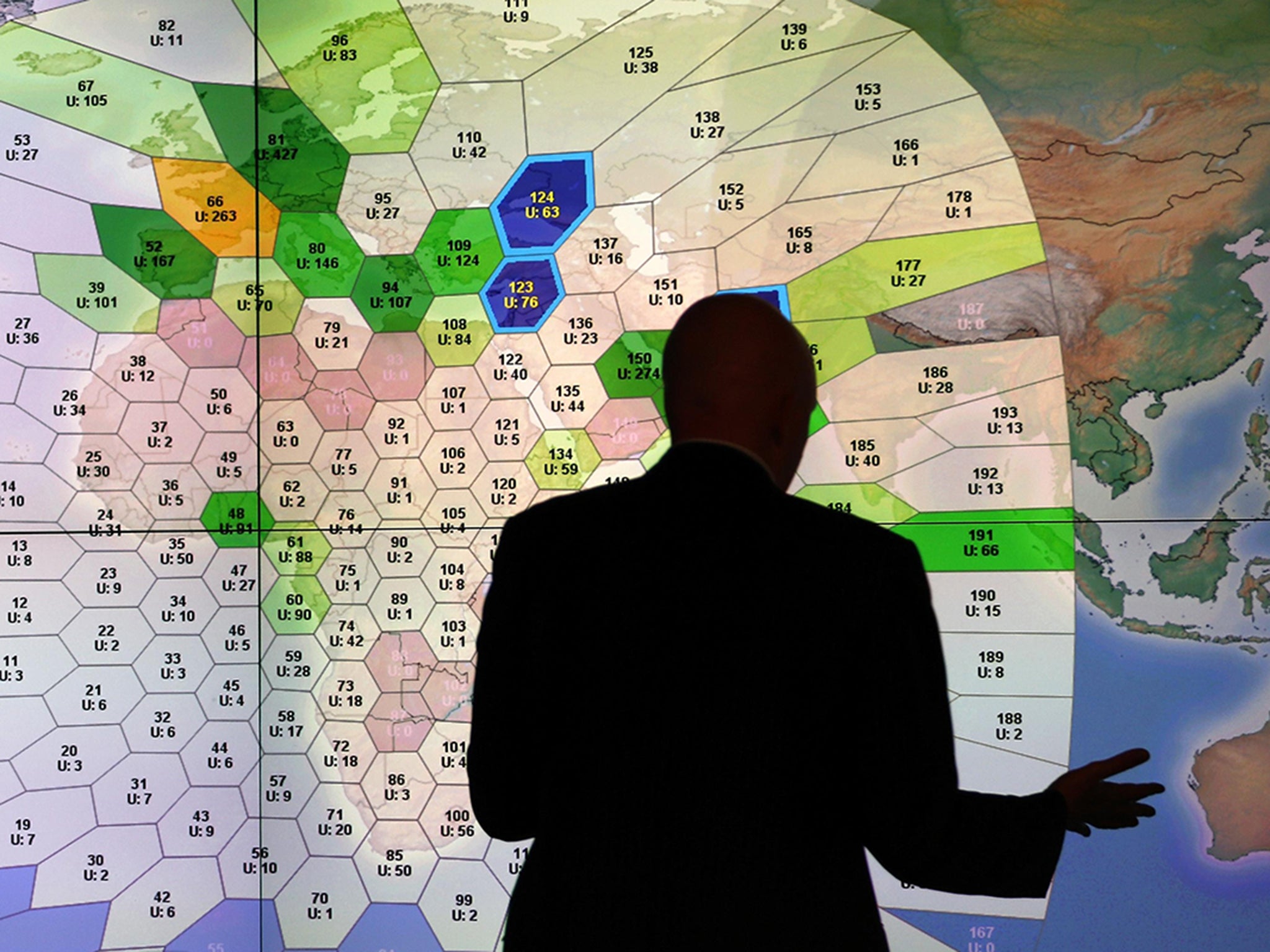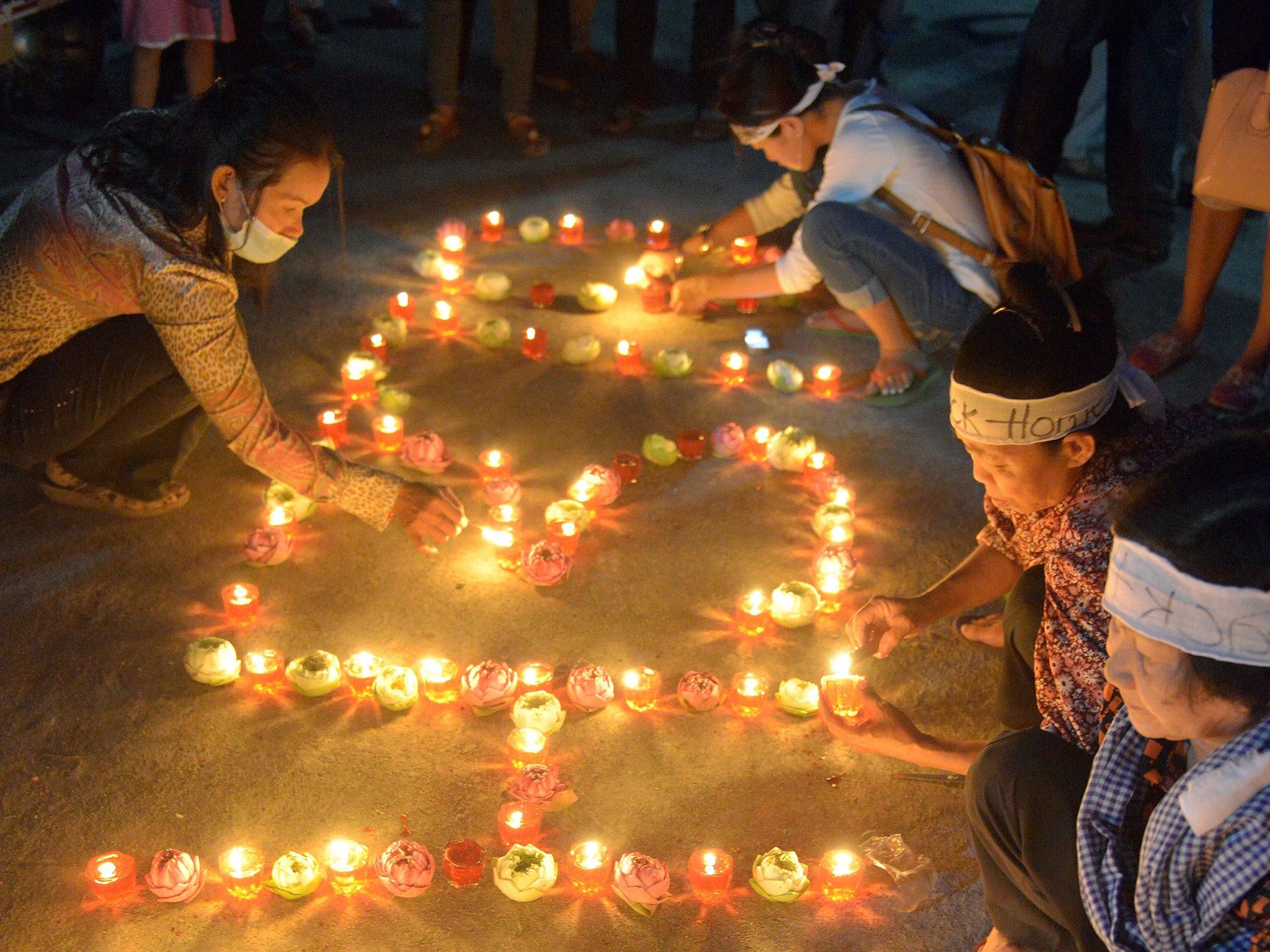Flight MH370 a year on: Lost without a trace – but the search goes on
It is a year since the aircraft disappeared, but investigators remain hopeful of finding it

Your support helps us to tell the story
From reproductive rights to climate change to Big Tech, The Independent is on the ground when the story is developing. Whether it's investigating the financials of Elon Musk's pro-Trump PAC or producing our latest documentary, 'The A Word', which shines a light on the American women fighting for reproductive rights, we know how important it is to parse out the facts from the messaging.
At such a critical moment in US history, we need reporters on the ground. Your donation allows us to keep sending journalists to speak to both sides of the story.
The Independent is trusted by Americans across the entire political spectrum. And unlike many other quality news outlets, we choose not to lock Americans out of our reporting and analysis with paywalls. We believe quality journalism should be available to everyone, paid for by those who can afford it.
Your support makes all the difference.“A harrowing 12 months of uncertainty and sorrow” – that is how Australia’s Prime Minister yesterday described the suffering of the families of passengers and crew lost aboard flight MH370.
In the parliament in Canberra, Tony Abbott told relatives: “We are taking every reasonable step to bring your uncertainty to an end.” But he hinted that if the present phase of the hunt for the missing Malaysia Airlines jet proves fruitless, it may be scaled back. “I cannot promise that the search will go on at this intensity forever,” he said.
A year ago tomorrow, 227 passengers – 152 of them Chinese citizens – checked in for a routine departure from Kuala Lumpur, destination Beijing. Twelve crew were assigned to the flight, which was to depart shortly after midnight on 8 March. Four passengers failed to check in, while two of the people who did fly were Iranian nationals travelling on stolen passports.
The last contact with the Boeing 777 MH370 took place at 1.19am, local time, when the captain signed off from Malaysian air-traffic controllers with the words “Good Night Malaysian three seven zero”. It took a further six hours before the airline told the world that one of its aircraft was missing. Initially the jet was assumed to have crashed in the South China Sea towards to the southern tip of Vietnam.
Yet ground-breaking analysis of fragmentary “pings” picked up by Inmarsat showed that the plane was still flying at the time the loss was announced. It was deduced to be flying along one of two corridors: north-west across southern China and Central Asia towards the Caspian Sea, or south across the Indian Ocean to the west of Australia. With no sightings of the aircraft on land, the plane is presumed to be in the sea off Australia. Yet after months of a multinational hunt costing tens of millions, not a single trace of the jet has been found. For the grieving families, the heartbreak continues.
How big a haystack, how small a needle?
The Australian Transport Safety Bureau (ATSB) began the current phase in September. The search area where the plane is deemed most likely to be has been narrowed down to a patch of previously unmapped sea three times the size of Wales. The zone is in the Roaring Forties, one of the planet’s roughest stretches of ocean.
Four specialist vessels are inspecting the seabed by sonar, with three classifications for unusual features. Class 3 for contacts that are of some interest as they stand out from their surroundings but have low probability of being significant; about 100 have been identified. Class 2 sonar contacts are typical of man-made objects, but not resembling an aircraft debris field; about a dozen have been found; Class 1 contacts “are of high interest and warrant immediate further investigation”; none has yet been identified.
A fruitless search?
Not according to Martin Dolan, the bureau’s chief commissioner. At the start of the current phase last September, he told me he was fairly confident of finding the plane within 12 months: “A year is a rough estimate based on the capabilities of the vessels we have, the nature of the sea floor and the extent of the higher probability areas. We expect to find the aircraft in the course of that search, but there is no complete guarantee of success.”
Anything that helps the relatives find closure is clearly valuable – but is that the only purpose of the search?
No. Finding MH370 is critical to help the airline industry to devise systems that will prevent any repeat of the tragedy.
Some say that the only theory that fits all the known facts is that this was a bizarre suicide mission by the captain. Is that credible?
Certainly it is accepted that someone was at the controls when the aircraft’s transponder was switched off, causing the aircraft to become almost invisible, and that changes of course were commanded.
Captain Zaharie Shah and first officer Fariq Abdul Hamid are plausible candidates because they work on the flight deck and have all the professional knowledge.
The first book on the tragedy, Goodnight Malaysian 370, postulated that the captain chose his moment perfectly: just after signing off from Malaysian air-traffic controllers, in aviation “no man’s land” in the middle of the South China Sea, he locked his co-pilot out of the cockpit. Then, it is presumed, he depressurised the cabin to incapacitate – and quickly kill – the other passengers and crew. He then, the theory goes, set the controls for a patch of the planet where the aircraft would never be found – even taking the trouble to execute a landing on water gentle enough to keep the plane intact.
This grisly version of events has plenty of supporters. One senior UK aviation figure says: “Whether he let the aircraft run out of fuel or deliberately crashed it into the sea we will never know, but my guess is it was dived deliberately at the chosen spot.”
But the theory also has some inconvenient puzzles. Suppose the co-pilot had indeed been locked out of the cockpit. Immediately he, other crew and passengers would try to communicate with the outside world using mobile phones. Since the aircraft promptly flew back across Malaysia, it seems likely that at least some attempts should have succeeded. None has been identified.

What other theories have been put forward?
To fill the information vacuum, all manner of outlandish theories have been postulated, though most of them are easily demolished. The most recent is from Jeff Wise, an aviation expert hired by CNN, who contends that the plane was hijacked by Russian special forces via its electronics bay beneath the first-class cabin. It was, he says, flown to an airport near the Baikonur Cosmodrome in Kazakhstan, on the instructions of Vladimir Putin.
Pilots and engineers familiar with the Boeing 777 says his theory has no credibility.
Alternative conspiracy theories abound, including that the plane was variously shot down by the US or that it landed at the American base on the island of Diego Garcia. However, from experience of previous aviation mysteries that are eventually solved it is much more probable that a sequence of improbable events never previously envisaged led to the plane’s loss.
Could it happen again?
Yes. A year on, there has been very little global progress on ensuring that a large passenger jet such as the 777 cannot simply disappear.
At present the “black boxes” – the cockpit voice recorder and flight data recorder – are based on 1970s systems, when it was not feasible continuously to track a flight’s progress. Even if the MH370 voice recorder were to be recovered tomorrow, it may be of no use since it records only the final two hours of flight deck speech, during which it seems unlikely that any conversation took place.
A more rational, 21st-century system where data on position, speed and direction is routinely transmitted via satellite is possible, but expensive. Meanwhile, the main form of identification remains the transponder. This device was derived from Second World War “friend or foe?” systems and, as MH370 demonstrated, can be switched off from the flight deck.
Join our commenting forum
Join thought-provoking conversations, follow other Independent readers and see their replies
Comments